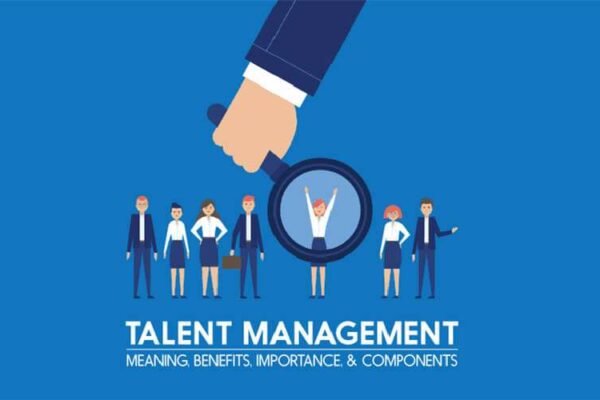Although the terms employee engagement and job satisfaction may seem very similar, they are actually very different. It will have a big effect on your business if you can figure out what that difference is.
There is one very efficient way to reverse this trend, though, and that is to address the problem of employee engagement and job satisfaction. Knowing the difference between job satisfaction and employee engagement will help you keep your workforce happy, motivated, and much less likely to quit.
- What is Job Satisfaction?
- What is Employee Engagement?
- Factors Affecting Job Satisfaction
- Factors Affecting Employee Engagement
- How Employee Engagement Differs from Job Satisfaction
- Measure These Metrics to Assess Job Satisfaction
- Measure These Metrics to Gauge Employee Engagement
- How Your Company Can Improve Engagement
- Conclusion
What is Job Satisfaction?
When a worker enjoys their work, this is referred to as employee satisfaction or job satisfaction. The pay, hours, and flexibility are just a few examples of the various factors an employee can use to gauge their level of happiness.
In most cases, employee satisfaction is sufficient to keep a person in a position for many years. It doesn’t necessarily follow that they’ll realize their full potential and advance your company, though.
What is Employee Engagement?
How involved and connected a worker feels in their work is more indicative of employee engagement. The level of engagement that an employee experience is influenced by a number of elements, including their level of drive, interest, purpose, and personal investment.
The success of the company may not seem connected to an individual if they don’t feel invested in their job. This might prompt them to look for a job with more significance down the road.
Factors Affecting Job Satisfaction
Compensation
Job satisfaction is primarily influenced by compensation, which is the first and most important factor. Here, keep in mind two things. One, the pay scale must be positioned competitively against similar companies in your region. Two, with the pay they receive, employees should be able to maintain a higher-than-average standard of living.
Benefits
You can support the benefits of high pay by providing a full benefits package that addresses financial wellness, childcare, and family coverage in addition to the employee’s physical and mental well-being. Unrestricted paid time off or an on-site gym may not be necessary benefits for you. And this is a significant distinction between job satisfaction and employee engagement. People prefer more robust necessities to frills they can live without.
Work-life Balance
62% of workers feel the work-life balance is most important for a company culture that fosters success.
Your workforce can achieve a healthy work-life balance by having shorter commutes, the option to work from home, paid leaves, and required vacation days, among other things. Their quality of life will be better because they will have more time for personal or family activities. This is one of those elements that not only guarantees fulfillment but also might help to a certain extent with employee engagement.
Recognition
Every employee wants to feel appreciated for their work, regardless of their personality, professional aspirations, or level of engagement or satisfaction. With annual reviews and evaluations, you can either adopt a formal structure of recognition or an informal one where accomplishments are acknowledged right away. Remember that this is a factor that can support both job satisfaction and engagement, so we advise both.
Factors Affecting Employee Engagement
Inspiring Leadership
Engagement among employees begins at the top. Before making a crucial decision, business leaders must be collaborative, regularly interacting with their staff, sharing ideas with them, and asking for their input. This keeps workers interested by giving them a sense of participation in the company’s expansion.
Career Development
In many ways, career advancement can be superior to employee benefits, and this is especially true for millennials and Gen Zers. According to LinkedIn’s 2019 Workforce Learning Report, the No. 1 reason this segment quits is the lack of learning and career development opportunities.
Internal Communication
When you have a large, dispersed workforce, communication is especially important in determining how engaged your employees are. For a workplace to be engagement-friendly, employees must be able to connect in real time, receive frequent updates from the company, and quickly resolve issues (no matter how minor).
a Culture of Diversity
A diverse workplace culture is crucial for ensuring the highest level of engagement for each individual. In doing so, the business demonstrates its willingness to consider fresh suggestions from any employee, to guard against bias, and to guarantee that everyone has an equal chance. Every minority group and the generational gap must be represented in diversity, which must be ingrained in the company’s values.
How Employee Engagement Differs from Job Satisfaction
A worker can be content at work without feeling engaged because engagement is about much more than just getting paid well and being able to leave the office on time. Simply having job satisfaction is enough to keep the majority of workers in their positions most of the time.
To ensure productivity, though, merely concentrating on job satisfaction is insufficient. The promotion of greater productivity will come from a focus on employee engagement.
Any employee who is engaged in their work will be very invested in it. However, more is required to drive engagement than it is to drive satisfaction. However, employee satisfaction is a solid foundation on which to build employee engagement and one in which it can flourish.
Customer satisfaction, employee retention, productivity, quality, and innovation will all increase if you can successfully engage your workforce. Additionally, motivated staff members need less time for training, are involved in fewer accidents, and require fewer sick days.

Measure These Metrics to Assess Job Satisfaction
Absenteeism and Unpaid Leaves
Absenteeism is an obvious indication that staff members lack the motivation to arrive at work on time. This excludes paid leaves because doing so indicates that employees are striking a healthy balance between their professional and personal lives. You may need to review your job satisfaction measures if workers are prepared to give up some of their pay for unpaid time off.
Referral Volumes
Someone who is happy in their job is more likely to suggest that others join them. They want their loved ones to benefit from working for your company in the same ways that they do. A decrease in referrals, however, might be a sign that staff members aren’t happy.
In other words, they may still value their work and be engaged, but they may also believe that the benefits offered by their employers are insufficient to fully reward them for their efforts. This metric requires careful monitoring because of this.
Social Media Reviews
Data on job satisfaction can be found in employee reviews on social media sites like Indeed and Glassdoor. On social media, they frequently express information that they might not directly share with their employer. Create actionable takeaways from reviews and track how they affect your job satisfaction metrics.
Measure These Metrics to Gauge Employee Engagement
Employee Net Promoter Score (eNPS)
eNPS indicates an employee’s willingness to recommend others (note that the actual volume of referrals isn’t part of eNPS calculations). Employees rate your business on a scale of 0 to 10, according to whether they are considered promoters, detractors, or passives. A strong indication of engagement is when there are more supporters than critics. Our comprehensive eNPS guide has more information on this.
Offer Acceptance Rates
The level of candidate engagement at your company is reflected in the offer acceptance rates. Imagine that a company has 10 new hires scheduled to join in a month, but only five of them show up. The engagement of these candidates has a glaring gap. This may be an indicator of the level of engagement at your company as a whole; if recruitment efforts are unsuccessful, current employee retention may suffer as a result.
Total Health Index (THI)
Three characteristics of employee engagement are intended to be encapsulated by this relatively new idea. It begins by tracking attendance, a fundamental indicator of interest. It also takes unhealthy presenteeism into account, which is when workers report to work while they are ill or under pressure. Finally, it assesses employees’ capacity for discretionary effort, or how willing they are to go above and beyond for the benefit of the business. This metric gives organizations a picture of overall engagement and aids in streamlining efforts in various areas to guarantee total engagement throughout the employee lifecycle.

How Your Company Can Improve Engagement
Recognize Your Employees’ Hard Work
By all means, let them know how proud you are of them when they complete a noteworthy project with excellence. Regular (but not constant) appreciation of your workers’ efforts can boost morale.
Invest in Professional Development
Only 25% of employees, according to our Engagement Report, feel that their employers provide enough opportunities for professional growth. They’ll repay the favor if you invest in the future of your team.
Let Employees Pursue Pet Projects
It quickly becomes monotonous to perform the same task every day at work. Employee engagement is higher when given the chance to work in different departments and take on projects that interest them.
Embrace Remote Working and Flexible Scheduling
The right benefits can motivate workers. Allow your staff to occasionally (if not regularly) work from home if you haven’t already. Consider flexible scheduling as another option. If they can work when and where they want, your employees will be more content.
Plan Team-building Activities Regularly
When coworkers get along with one another, employees are more likely to be engaged. Plan team-building events, such as happy hours or potlucks, so that your employees can get to know one another better. You never know when you’ll meet someone amazing over a beer.
Treat Your Staffers Like Adults
Anyone who has ever had a boss who micromanaged every task can attest to how terrible it is. For a specific task, you hired your employees. They are competent enough to handle their work obligations without being concerned about you watching them every five minutes. Treat your staff members like adults and give them some degree of freedom.
Conclusion
It’s imperative to look into ways to increase employee engagement if you want to advance your business. Your company’s foundation will be greatly strengthened if you invest in engagement. The bottom line will benefit from having a happier workforce, which is what it ultimately means.





